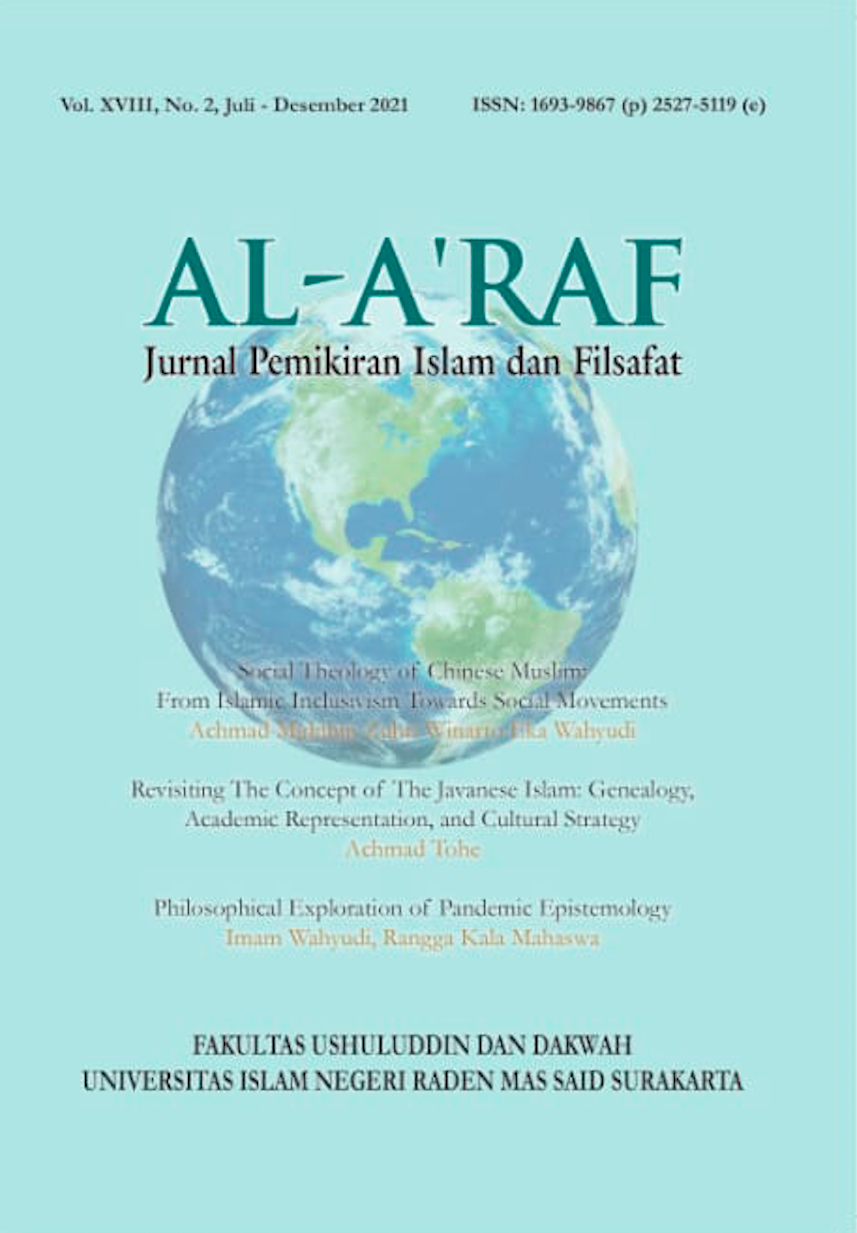Al-A'raf : Jurnal Pemikiran Islam dan Filsafat
Full Lenght Article
STRATEGIES FOR RELIGIOUS CONFLICT RESOLUTION IN INDONESIA: A CASE STUDY OF THE JA’FARIYAH SHI’A MINORITY IN TERNATE
Abstract
This study aims to describe and analyse the relationship between religious groups, societies, and governments, as well as strategies for managing religious conflict, with a case study of the Ja'fariyah Shi'a minority group in Moya, Ternate. The Shi'a community led by Nawawi Husni, according to the Jema'ah Ahlul Bait Indonesia (IJABI), is considered to have different religious teachings and practices and is judged to be inconsistent with the teachings of the Shi'a in general. In addition to having a layered complexity, the existence of this community is also considered misguided, so it is often the target of the intolerance of other religious groups, even by the local government. Through a qualitative approach using a sociological perspective, the results of this study revealed that the silent (non-reactive) attitude of the Ja'fariyah Shi'a group in responding to various rejections and misconceptions about its group is not passive. Instead, they choose to do "resistance" creatively by using the media to counter negative opinions against them. The choice of this "resistance" model is not separate from the role and position of Husni Nawawi in attracting the government's interests. Consider that the pattern of hard-power conflict approaches must change to the smart-power transformation model.
Keywords
Declarations
Publisher's Note
UIN Raden Mas Said Surakarta remains neutral with regard to jurisdictional claims in published maps and institutional affiliations.
References
Byman, Daniel L. Keeping the Peace. Baltimore dan London: The John Hopkins University Press, 2002.
Campo, Juan E. Encyclopedia of Islam. New York: Infobase Publishing, 2009.
Dahl, Robert A. “The Concept of Power.” Behavioral Science 2, no. 3 (January 1, 1957): 201–215. https://doi.org/10.1002/bs.3830020303.
Haryanto, Sindung. Spektrum Teori Sosial : Dari Klasik Hingga Postmodern. Yogyakarta: Ar-Ruzz Media, 2012.
Hasim, Moh. “Syiah : Sejarah Timbul Dan Perkembangannya Di Indonesia.” Analisa 19, no. 02 (2012): 148.
Jeong, Ho-Won. Conflict Management and Resolution : An Introduction. New York: Routledge, 2010.
Josef Raab. “Heinrich Wilhelm Schäfer, Identity Politics and the Political Field : A Theoretical Approach to Modelling a "Field of Identity Politics.” In New World Colors: Ethnicity, Belonging, and Difference in the Americas, Inter-American Studies, Estudios Interamericanos, 380. Vol. 9. Wissenschaftlicher Verlag Trier & Tempe, AZ: Bilingual Press, 2014.
Laurie, Timothy, and Rimi Khan. “The Concept of Minority for the Study of Culture.” Continuum 31, no. 1 (January 2, 2017): 1–12. https://doi.org/10.1080/10304312.2016.1264110.
Mubarrak, Husni, and Intan Dewi Kumala. “Diskriminasi Terhadap Agama Minoritas: Studi Kasus Di Banda Aceh.” Seurune, Jurnal Psikologi Unsyiah 3, no. 2 (2020): 42–60.
Muchtar, Ibnu Hasan. “Dinamika Lahirnya Fatwa Mui Provinsi Maluku Utara Tentang Sesatnya Syi’ah Ja’Fariyah Ajaran Nawawi Husni (Ong).” Harmoni 17, no. 2 (2018): 269–272.
Neuman, W Lawrence. Pearson New International Edition, Social Research Methode : Qualitative and Quantitative Approach. Seventh Ed. USA: Pearson Education Limited, 2014.
Sujadmi. “Yang Minoritas : Yang Tertindas (Analisis Konflik Ahmadiyah vs ‘Islam’).” Society 1, no. 1 (2013): 76.
Ulum, Muhammad Babul. Merajut Ukhuwah Memahami Syi’ah : Memuat Catatan Untuk Hidayat Nur Wahid. Bandung: Penerbit Marja, 2008.
Wahid, Ramli Abdul. “Aliran Minoritas Dalam Islam Di Indonesia.” Journal of Contemporary Islam and Muslim Societies 1, no. 2 (2017): 141–163.
Copyright and permissions
This work is licensed under a Creative Commons Attribution-NonCommercial 4.0 International License.



